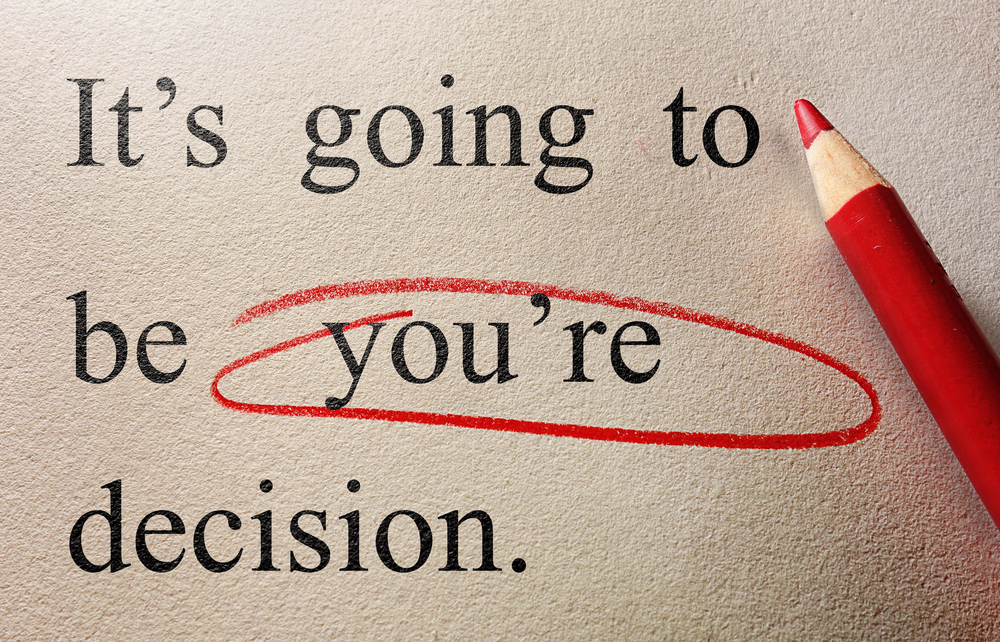Teaching English: The Error Correction Guide
One of the best things you can do as an English teacher is to help language acquisition through targeted and effective feedback. Correcting learners' errors is an important part of the teaching process as it tells you about the progress of your students and what remains to be learnt.
However, knowing when and what to correct is one of the most challenging and complex areas of teaching. Of course, almost any mistake or error needs to be addressed at some point during a learner’s language development. However both over-correction and poor correction can be demotivational for your students, so achieving the right balance is important. Okay, so how much correction should be made? What are the best techniques you should use? Yes, this is a difficult and daunting task, but read on for some suggestions and advice!
New Mistakes
Learning English is like learning to ride a bike; you will fall off your bicycle many times, but you will get the hang of it after a while. ‘Trial and error’ is the name of the game!
So, help your students to understand that errors are a natural part of the learning process when it comes to foreign languages. If they make new mistakes, it’s okay – this is a sign that they are learning!
A Positive Attitude
You need to keep your students enthusiastic. That’s why positive reinforcement is essential. When correcting a student avoid using negative remarks such as “No, wrong!”. Prefer more constructive comments such as “Good try!”. All learners intuitively appreciate teachers who create a joyful, supportive and non-threatening atmosphere in the classroom.
Self-Correction
Self-correction is when learners correct themselves instead of a teacher doing it. Sometimes, a mistake is simply a slip and your students are aware of the correct thing to say. So, make sure that you always give them enough time to self-correct.
For example, you can repeat the wrong word or raise your eyebrows – your students will know that they’ve just made a mistake! You can also use exaggerated facial expressions or hand signals to help your students recognise different types of errors. Pointing behind you is a classic way to show that your students should have used a past tense! Another good method is to use visual reminders. Many teachers have a big S on a wall (e.g. an S-shaped funny snake or an S-shaped object that students have made) and simply point to it when their students forget to use or say the final -s in the simple present (third person singular) tense.
Peer Correction
Peer correction often helps to create a positive classroom atmosphere, as your students realise that you are not the only source of correction, and that they can also learn a lot from their classmates. This correction method ensures that all students are paying attention, since you might ask them to help at any time.
For example, if you saw a group of children playing a game, you wouldn’t jump into the middle and stop the game just to tell some players that they didn’t know how to play according to the rules, right? You would just provide some general guidelines and then you let them collaborate and have fun. So the same thing in your English classroom!
Tell Me More
When it comes to speaking activities, should students be corrected immediately or later? Well, the answer to that question depends on a lot of factors. But in general, the best moment to correct any verbal errors is at the end of a speaking activity. That’s because if you are constantly stopping to make corrections, the flow of the class will be interrupted, and students may become reluctant to participate in speaking activities in the future. Even your confident and more relaxed students will lose some fluency if they are always trying to concentrate too much on accuracy. A good tip that helps is to make the correction process impersonal. For example, instead of saying “You said”, you could say “I heard” or just simply write the error(s) on the board.
* Insider tip: Bear in mind, though, that on-the-spot correction is a better idea when focusing on accuracy. And remember that using humour can always help when preferring the on-the-spot correction technique. Laughing and having fun can make linguistic risks and disasters an acceptable part of the English classroom culture!
Write More
Let’s face it, writing activities don’t usually scream ‘fun and games’!, but there are some techniques you can use to get your students to identify and correct their own errors or mistakes of their classmates.
For example, you can organise some Error Correction Races: have your students race to find as many errors as quickly as possible in an essay or some paragraphs that they have written. Bear in mind that they might need some clues such as being told how many errors there are to be found.
Recasting
Imagine that one of your students says something like “I go to the cinema yesterday”, and you reply by saying “Ah, you went to the cinema yesterday” or something like that. That’s recasting – you repeat what a student has just said but in correct English.
* Insider tip: Keep in mind that this method works better with teenagers and adults. Younger children may not pick up on this more subtle form of error correction.
If you have any other great tips or error correction techniques, please do share it with us.We’d really love to hear from you all! And if you are wondering how you can become the enthusiastic, inspirational and successful educator you’ve always wanted to be, we’ve got you covered. Read our article 5+1 WAYS TO BECOME A BETTER ENGLISH TEACHER to find out what it takes to become a great teacher!




Leave a Reply
Your email address will not be published. Required fields are marked